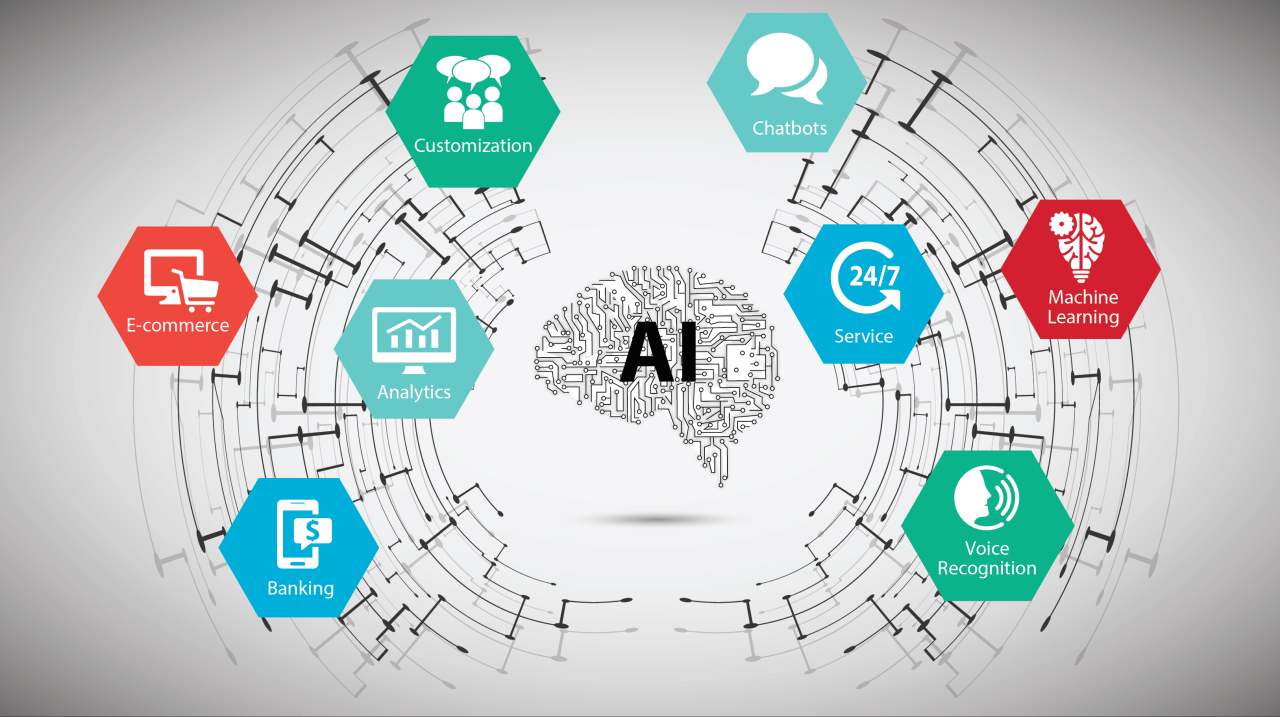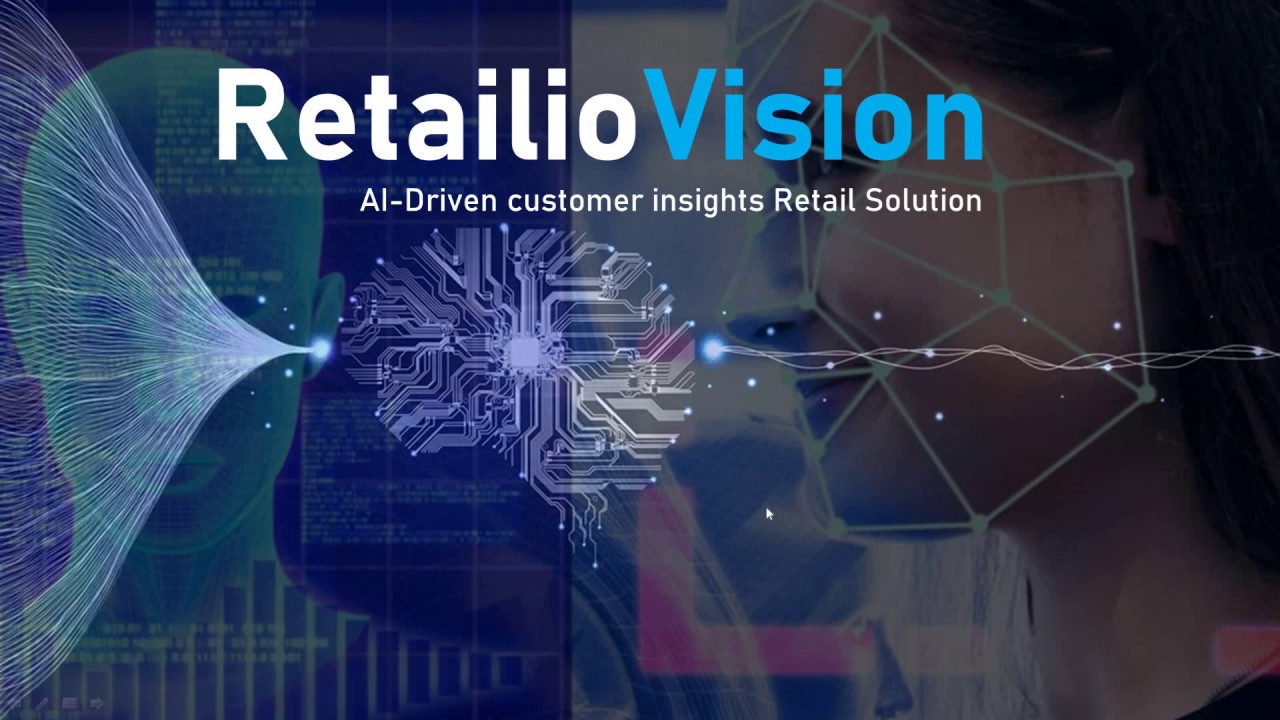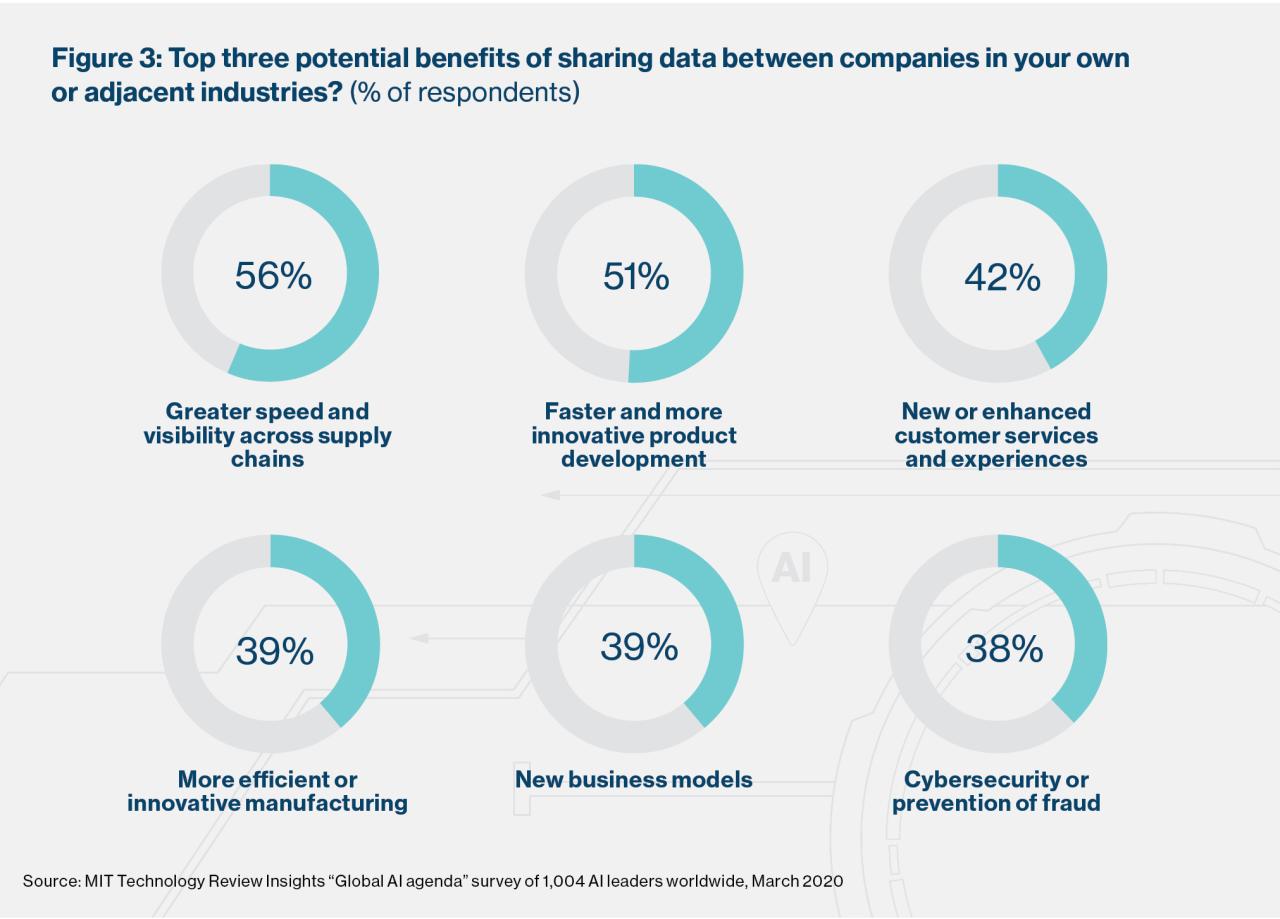AI-driven customer insights are revolutionizing how businesses understand and interact with their clientele. This powerful approach leverages advanced technologies like machine learning and natural language processing to analyze vast amounts of data – from transactional records and website behavior to social media interactions – revealing previously hidden patterns and trends. This allows businesses to make more informed decisions, personalize customer experiences, and ultimately, drive significant growth.
By moving beyond traditional methods reliant on simpler data analysis, businesses can unlock a deeper understanding of customer needs, preferences, and behaviors. This leads to more effective marketing campaigns, improved customer service, and innovative product development. This exploration delves into the methodologies, applications, and ethical considerations surrounding AI-driven customer insights, offering a comprehensive overview of this transformative technology.
Defining AI-Driven Customer Insights
AI-driven customer insights represent a significant advancement over traditional methods, offering businesses a more comprehensive and nuanced understanding of their customers. Unlike traditional methods that often rely on manual analysis of limited data sets, AI leverages advanced technologies to process vast quantities of data, uncovering hidden patterns and predicting future behavior with greater accuracy. This allows for more proactive and personalized strategies.The core difference lies in the scale and depth of analysis.
Traditional methods might analyze customer surveys or sales data, providing a limited view. AI-driven insights, however, incorporate a much broader range of data sources, leading to a richer and more predictive understanding.
Data Sources for AI-Driven Customer Insights
The power of AI-driven customer insights stems from its ability to integrate and analyze diverse data types. This multi-faceted approach provides a holistic view of the customer journey, revealing connections that would be missed by examining individual data points in isolation. Combining these data sources creates a powerful, comprehensive picture of customer behavior and preferences.
- Transactional Data: This includes purchase history, payment methods, and order frequency. Analyzing this data reveals purchasing patterns, customer lifetime value, and product preferences.
- Behavioral Data: This encompasses website activity (clicks, page views, time spent on site), app usage, and email engagement. This data illuminates how customers interact with a brand’s digital properties and identifies areas for improvement in the user experience.
- Social Media Data: Sentiment analysis of social media posts, reviews, and comments provides valuable insights into customer opinions and brand perception. This helps identify areas of strength and weakness and allows for proactive issue resolution.
- Customer Service Interactions: Data from call center interactions, chat logs, and email exchanges reveals customer pain points, frequently asked questions, and areas where customer service can be improved. Sentiment analysis can also identify frustrated or dissatisfied customers.
Key Technologies Enabling AI-Driven Customer Insights
Several key technologies are essential to the process of generating AI-driven customer insights. These technologies work in concert to extract meaningful information from large and complex datasets. Their combined power allows for the creation of predictive models and personalized recommendations.
- Machine Learning (ML): ML algorithms are used to identify patterns, predict future behavior, and build predictive models. For example, ML can predict customer churn, identify high-value customers, and personalize marketing campaigns.
- Natural Language Processing (NLP): NLP enables the analysis of unstructured text data, such as customer reviews, social media posts, and survey responses. This allows for sentiment analysis, topic extraction, and the identification of key themes in customer feedback.
- Deep Learning (DL): A subset of ML, DL uses artificial neural networks with multiple layers to analyze complex data patterns. This is particularly useful for tasks such as image recognition (analyzing product images on social media) and advanced sentiment analysis.
Applications of AI-Driven Customer Insights

AI-driven customer insights are transforming how businesses operate, offering unprecedented opportunities to understand and engage with their customers. By leveraging the power of artificial intelligence, companies can analyze vast amounts of data to glean actionable intelligence, leading to more effective strategies across various business functions. This section will explore several key applications of AI-driven customer insights.
AI-Driven Customer Insights in Marketing Campaigns
AI significantly enhances marketing campaign effectiveness. For example, AI algorithms can analyze customer data to identify ideal customer profiles (ICPs), predict customer behavior, and personalize marketing messages. This allows for targeted advertising campaigns that reach the right audience with the right message at the right time, resulting in higher conversion rates and improved return on investment (ROI). Netflix, for instance, uses AI to recommend shows and movies to its users based on their viewing history and preferences, leading to increased engagement and subscriber retention.
Similarly, Amazon uses AI-powered recommendation engines to suggest products to customers, boosting sales.
AI-Driven Customer Insights in Customer Service
AI-powered customer service tools are revolutionizing how businesses interact with their customers. Chatbots, powered by natural language processing (NLP) and machine learning (ML), can handle a large volume of customer inquiries efficiently and accurately, providing instant support 24/7. Sentiment analysis tools can monitor customer feedback across various channels (social media, email, surveys) to identify areas for improvement and proactively address negative experiences.
This leads to increased customer satisfaction, improved brand reputation, and reduced operational costs. Companies like Sephora utilize AI-powered chatbots to answer frequently asked questions, provide personalized product recommendations, and guide customers through the purchase process.
AI-Driven Customer Insights in Product Development and Innovation
AI-driven insights play a crucial role in shaping product development and innovation strategies. By analyzing customer feedback, market trends, and competitor activities, businesses can identify unmet needs and opportunities for new products or services. Predictive analytics can help forecast demand for new products, minimizing the risk of product failure. For example, companies like Tesla use AI to analyze customer feedback on their vehicles to identify areas for improvement and incorporate these insights into future models.
This data-driven approach ensures that products are aligned with customer expectations and market demands, leading to increased product success and innovation.
Comparison of AI-Driven and Traditional Insights
| Business Area | Metric | AI-Driven Insights | Traditional Methods |
|---|---|---|---|
| Marketing | Conversion Rate | Higher (e.g., 15-25% increase) due to personalization and targeting | Lower (e.g., 5-10% increase) due to less precise targeting |
| Sales | Sales Cycle Length | Shorter (e.g., 20-30% reduction) due to lead scoring and predictive analytics | Longer (e.g., minimal reduction) due to manual lead qualification |
| Customer Service | Customer Satisfaction (CSAT) Score | Higher (e.g., 10-15% increase) due to faster response times and personalized support | Lower (e.g., minimal increase) due to longer wait times and less personalized interactions |
Data Collection and Preparation for AI-Driven Insights

The foundation of any successful AI-driven customer insights project lies in the meticulous collection and preparation of data. This process involves not only gathering relevant information but also ensuring its quality, accuracy, and ethical handling, all while adhering to stringent privacy regulations. Neglecting this crucial stage can lead to inaccurate insights and potentially damaging consequences.Data collection for AI-driven customer insights necessitates a multifaceted approach, prioritizing ethical considerations and legal compliance.
Ethical Data Collection and Privacy Compliance
Ethical data collection is paramount. This involves obtaining explicit consent from customers before collecting and using their data, being transparent about how the data will be used, and providing mechanisms for customers to access, correct, or delete their information. Adherence to regulations like GDPR (General Data Protection Regulation) and CCPA (California Consumer Privacy Act) is non-negotiable. This includes implementing robust data security measures to protect customer data from unauthorized access or breaches.
For example, employing encryption techniques and access control mechanisms ensures data confidentiality. Furthermore, data minimization—collecting only the data strictly necessary for the intended purpose—is a key principle to uphold. Organizations should also establish clear data governance policies and procedures to guide data handling practices.
Data Cleaning and Preprocessing
Once data is collected, it needs thorough cleaning and preprocessing to ensure accuracy and reliability. This involves handling missing values, removing duplicates, and transforming data into a suitable format for AI algorithms. Data cleaning often involves identifying and correcting inconsistencies, such as misspelled names or incorrect dates. Data transformation may involve converting categorical variables into numerical representations (e.g., using one-hot encoding) or scaling numerical variables to a similar range (e.g., using standardization or normalization).
This step is critical because AI algorithms are sensitive to data quality; inaccurate or inconsistent data will lead to unreliable and potentially misleading insights. For instance, a customer survey with inconsistent responses regarding age (e.g., text responses, numerical responses, missing values) requires careful cleaning and standardization before being used to train a model predicting customer churn.
Handling Missing Data and Outliers
Large datasets inevitably contain missing values and outliers. Missing data can be handled through various techniques, including imputation (filling in missing values based on other data points) or removal of rows or columns with excessive missing data. The choice of method depends on the nature and extent of missing data and the characteristics of the dataset. Outliers, data points significantly different from the rest, can be handled by removing them, transforming them (e.g., using logarithmic transformations), or using robust statistical methods less sensitive to outliers.
For example, if analyzing customer purchase history, an outlier might be an unusually large purchase. Simply removing it might be acceptable if it’s deemed an anomaly unrelated to typical purchasing behavior. However, a more sophisticated approach might involve investigating the outlier to understand the underlying cause. This could reveal valuable insights into customer behavior or potential data entry errors.
AI Models and Algorithms for Customer Insight Generation
The selection and application of appropriate AI models and algorithms are crucial for effectively extracting valuable insights from customer data. Different algorithms offer unique strengths and weaknesses, making the choice dependent on the specific business problem and the nature of the data available. Understanding these nuances is key to building a successful AI-driven customer insights strategy. This section will explore several key models and algorithms, highlighting their capabilities and limitations in the context of customer data analysis.
Machine Learning Algorithms for Customer Segmentation
Customer segmentation, the process of dividing customers into groups based on shared characteristics, is a fundamental application of AI in customer insights. Several machine learning algorithms excel at this task, each employing different approaches to grouping customers. K-means clustering, for example, is an unsupervised learning algorithm that partitions data into k clusters based on distance from cluster centroids.
Hierarchical clustering builds a hierarchy of clusters, allowing for a more nuanced understanding of customer relationships. In contrast, supervised learning algorithms like Support Vector Machines (SVMs) can be used for segmentation when labeled data (e.g., customer segments already defined) is available, allowing for more accurate and targeted segment definition. K-means is computationally efficient but sensitive to initial centroid placement, while hierarchical clustering can be computationally expensive for large datasets.
SVMs offer high accuracy but can be complex to tune. The choice between these algorithms depends on factors like dataset size, computational resources, and the availability of labeled data.
Strengths and Weaknesses of Predictive Modeling Techniques for Customer Behavior, AI-driven customer insights
Predictive modeling uses historical data to forecast future customer behavior, such as churn prediction, purchase likelihood, or product recommendations. Regression models, including linear and logistic regression, are commonly used for predicting continuous and binary outcomes, respectively. While relatively simple to interpret, they assume linear relationships between variables, which may not always hold true in real-world scenarios. Decision trees and random forests offer greater flexibility by handling non-linear relationships and interactions between variables, providing better accuracy in many cases, although their interpretability can be less straightforward.
Neural networks, on the other hand, can model highly complex relationships but require significant computational resources and may be prone to overfitting if not carefully trained. For instance, a telecom company might use logistic regression to predict customer churn based on factors like usage patterns and customer service interactions, while an e-commerce platform might leverage a random forest model to predict the likelihood of a customer purchasing a specific product.
Natural Language Processing for Analyzing Customer Feedback and Reviews
Natural Language Processing (NLP) plays a vital role in understanding unstructured customer data like reviews, surveys, and social media posts. Techniques like sentiment analysis allow businesses to gauge overall customer satisfaction and identify areas for improvement. Topic modeling can uncover key themes and concerns expressed by customers. Named entity recognition helps identify specific products, brands, or individuals mentioned in customer feedback.
For example, a restaurant chain could use sentiment analysis to identify negative reviews focusing on food quality or service, while an online retailer might use topic modeling to uncover recurring themes in customer reviews related to shipping times or product defects. NLP enables a deeper understanding of customer opinions and preferences beyond simple numerical metrics.
AI Models Suitable for Different Types of Customer Data
The choice of AI model should align with the characteristics of the available customer data. Below are three examples:
- Recommendation Systems (Collaborative Filtering): Suitable for transactional data (e.g., purchase history, website interactions). This model leverages similarities between customers or items to recommend products or services. For example, a streaming service uses collaborative filtering to suggest movies based on a user’s viewing history and the viewing history of similar users.
- Time Series Analysis (ARIMA models): Suitable for temporal data (e.g., website traffic, sales figures). These models capture trends and seasonality in data to forecast future values. For example, a retail company uses ARIMA models to predict sales for the upcoming holiday season based on past sales data.
- Deep Learning Models (Recurrent Neural Networks): Suitable for sequential data (e.g., customer journey data, social media interactions). RNNs excel at capturing temporal dependencies in data, providing insights into customer behavior over time. For example, a social media platform uses RNNs to analyze user engagement patterns and personalize their newsfeed.
Visualizing and Communicating AI-Driven Insights: AI-driven Customer Insights
Effectively communicating the findings derived from AI-driven customer insights is crucial for their successful implementation. Data visualization plays a pivotal role in transforming complex analytical results into easily digestible and actionable information for both technical and non-technical stakeholders. This section explores the best practices for creating impactful visualizations and communicating insights clearly and concisely.The success of AI-driven customer insights hinges on the ability to translate complex data patterns into clear, concise narratives that resonate with decision-makers.
Visualizations serve as a powerful bridge, converting raw data into compelling stories that inform strategy and drive business outcomes. Furthermore, clear communication ensures that insights are not only understood but also actively utilized to improve customer experience and business performance.
Data Visualization Techniques for Communicating AI-Driven Insights
Effective data visualization is key to making AI-driven insights accessible and understandable. Different visualization types are suited to different data and insights. For example, dashboards provide a comprehensive overview, while charts and graphs highlight specific trends and relationships. The choice of visualization should always align with the specific insights being communicated and the audience’s understanding.
Consider these examples:
- Dashboards: A well-designed dashboard can present a holistic view of key customer metrics, such as customer churn rate, customer lifetime value (CLTV), and customer satisfaction (CSAT) scores, all derived from AI analysis. Interactive elements allow stakeholders to drill down into specific areas for more detailed analysis.
- Line charts: Ideal for showcasing trends over time, such as website traffic, sales figures, or customer engagement metrics. These charts effectively illustrate the impact of marketing campaigns or product launches on customer behavior.
- Bar charts: Useful for comparing different categories, such as customer demographics, product preferences, or customer segments identified by the AI model. They clearly highlight differences and similarities across groups.
- Scatter plots: Effective for identifying correlations between two variables, such as customer spending and website engagement. This can help identify customer segments with high potential for increased spending.
- Heatmaps: Useful for visualizing the relationships between multiple variables, such as customer location and purchase frequency. They can reveal geographic patterns in customer behavior or product demand.
Communicating Insights to Non-Technical Audiences
When presenting AI-driven insights to non-technical audiences, simplicity and clarity are paramount. Avoid technical jargon and focus on the business implications of the findings. Use storytelling techniques to make the insights relatable and memorable. Focus on the “so what?” – the practical implications of the data for business strategy and decision-making.For example, instead of saying “The unsupervised learning model identified three distinct customer segments based on k-means clustering,” you might say, “Our analysis reveals three key groups of customers with distinct needs and preferences.
Understanding these groups allows us to tailor our marketing and product development efforts for better results.”
Illustrative Workflow: Raw Data to Actionable Insights
Imagine an image depicting a three-stage process. The first stage shows a chaotic jumble of raw customer data – emails, purchase history, website interactions, social media posts – all represented in various colors and sizes, suggesting complexity and disorder. Arrows point towards a central processing unit, symbolizing the AI algorithms. The second stage shows this same data now organized and structured, perhaps as neat rows and columns in a database, with clear visual links to the AI processing unit.
The colors are now more consistent and organized. The third stage displays a concise, visually appealing dashboard showing key insights, such as customer segments, predicted churn rates, and recommended actions. The dashboard uses clear, easily understandable charts and graphs, conveying a clear message of actionable insights. The overall visual flow demonstrates the transformation from raw, unstructured data into clear, actionable intelligence.
Challenges and Ethical Considerations

The power of AI-driven customer insights comes with significant responsibilities. Successfully leveraging this technology requires careful consideration of potential biases, ethical implications, and the crucial need for robust data security and privacy measures. Failing to address these challenges can lead to inaccurate insights, damaged customer relationships, and legal repercussions.
Potential Biases in AI-Driven Customer Insights and Mitigation Strategies
AI algorithms learn from the data they are trained on. If this data reflects existing societal biases, the resulting insights will likely perpetuate and even amplify those biases. For example, an algorithm trained on historical purchasing data might unfairly target certain demographic groups with specific products or services, based on past discriminatory practices. To mitigate this, rigorous data auditing is crucial.
This involves identifying and correcting biased data points before training the AI model. Furthermore, employing diverse and representative datasets and implementing fairness-aware algorithms can help ensure more equitable outcomes. Regularly evaluating the model’s output for bias and adjusting the model accordingly is also essential. Transparency in the model’s decision-making process is paramount, allowing for identification and correction of biases.
Ethical Implications of AI-Driven Personalized Marketing and Targeted Advertising
Personalized marketing, while offering benefits to both businesses and consumers, raises ethical concerns. The ability to precisely target individuals with tailored advertising can be intrusive and manipulative if not handled responsibly. For example, using AI to identify vulnerable individuals and target them with products or services they may not need or afford is ethically questionable. Similarly, the constant tracking and profiling of individuals can lead to a sense of being constantly surveilled.
Ethical guidelines should be developed and adhered to, focusing on transparency about data collection and usage, providing users with control over their data, and avoiding manipulative tactics. Respecting consumer autonomy and privacy should always be prioritized.
Data Security and Privacy in AI-Driven Customer Insights
Protecting customer data is paramount. AI-driven customer insights rely on vast amounts of sensitive personal information, making data security and privacy a critical ethical and legal concern. Data breaches can have severe consequences, including financial losses, reputational damage, and legal penalties. Implementing robust security measures, such as encryption, access controls, and regular security audits, is essential. Compliance with relevant data privacy regulations, such as GDPR and CCPA, is mandatory.
Transparency about data collection practices and providing users with clear and concise information about how their data is used is also vital for building trust and maintaining ethical standards. The development and implementation of privacy-preserving AI techniques, such as federated learning and differential privacy, can help mitigate privacy risks while still allowing for valuable insights to be generated.
In conclusion, AI-driven customer insights represent a paradigm shift in how businesses approach understanding their customers. By harnessing the power of artificial intelligence and vast datasets, organizations can gain a competitive edge, create more personalized experiences, and drive significant improvements across various business functions. However, ethical considerations and responsible data handling remain paramount, ensuring the responsible and effective utilization of this transformative technology.
The future of customer engagement is undoubtedly intertwined with the intelligent analysis of data, paving the way for more meaningful and mutually beneficial relationships.
Top FAQs
What are the potential risks associated with using AI for customer insights?
Risks include data bias leading to unfair or discriminatory outcomes, privacy breaches if data isn’t handled securely, and the potential for over-reliance on AI predictions, neglecting other valuable insights.
How much does implementing AI-driven customer insights cost?
Costs vary greatly depending on the scale of implementation, the technologies used, and the level of expertise required. Smaller businesses might start with affordable tools, while larger enterprises may invest in more extensive solutions.
How long does it take to see results from AI-driven customer insights?
The timeframe depends on factors such as data quality, the complexity of the AI models, and the specific business objectives. Early results may be seen within weeks, while more comprehensive insights may take months to fully materialize.
